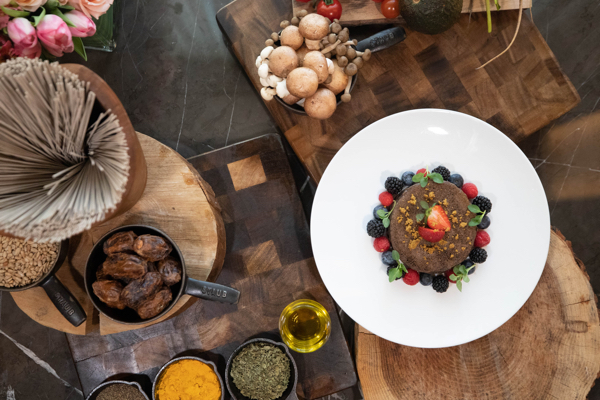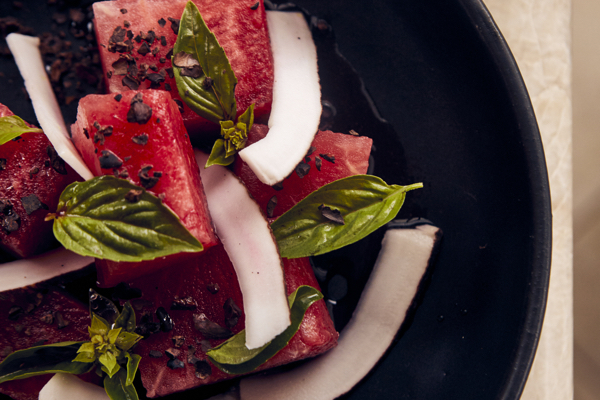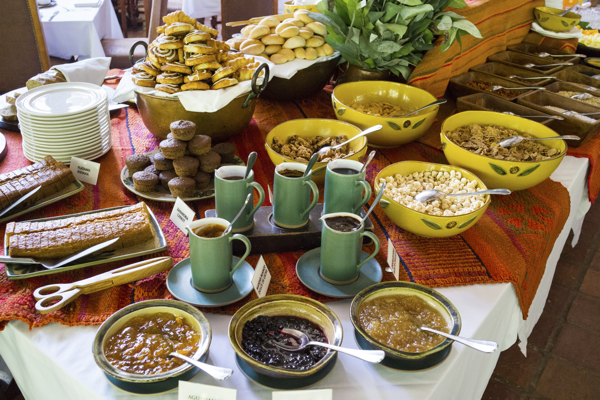Breakfast is still one of the most important meals for hotel food and beverage operations.
Contributed by Jeanette Hurt
Breakfast remains the most popular meal in a hotel, said Haim Spiegel, director of F&B, Dan Hotels, Tel Aviv Israel. “It’s an opportunity that the hotel would not miss to show its professional brigade and innovation,” he said.

Breakfast is so important and so popular that many diners are enjoying it longer. “We’ve pushed the serving hours back to around three or five o’clock in the afternoon,” said Will Marquardt, managing director of food and beverage for the Palisociety Dining Group, which is now an extension of the Palisociety Hotel brand. “We decided to keep the menu really heavy on the breakfast items later in the day, and what we’ve found is that it’s really popular not just with traveling guests but neighborhood guests. People like to have breakfast when they want to have it, which is fun and why we’re here.”
Palisociety is opening a new hotel in California, and the all-day or almost all-day breakfast menu will be a part of it. “The concept is working well for us, so much so that we will do another hotel with it,” Marquardt said.
“We have noticed that people linger longer in the morning, especially leisure guests, and they are looking for the taste of adventure or an indulgence,” said Jason Bin Xu, executive sous chef for the Peninsula Hotel in Chicago, adding that the ‘Pen-edict,’ an eggs Benedict which starts with toasted croissant, topped with a lobster tail, poached eggs and truffled hollandaise with caviar and shaved truffle on top, is quite popular. “Eggs are the most popular dishes on the breakfast menu. People are accustomed to having eggs for breakfast. They are likely to treat themselves to something unique or something they would not normally have at home, which might include eggs Benedict, a frittata or avocado toast prepared in a unique way.”

Callum Kennedy, group general manager for QT Hotels & Resorts in Australia, said breakfasting guests fall into one of two categories. “We have two distinct market segments: corporate guests who are generally seeking a more classic approach, such as eggs on toast or a bacon and egg roll,” Kennedy said. “Then we have leisure guests who are more inclined to order a big breakfast or ‘the big brekkie,’ as it’s fondly known Down Under. Trends come and go, but The Big Brekkie, Eggs Your Way and Smashed Avocado/Avocado Toast have long prevailed as the most popular.”
Healthier options, vegan options and gluten-free options continue to trend and remain important to guests. “The most favorable concept has to do with the Mediterranean diet,” Spiegel said. “Lots of vegetables and fruit, light egg dishes with very little fat or deep frying, whole grain rolls and breads and goat yogurt with honey. Apart from these, we see a lot of demand for gluten-free pastries, and that’s even among people who don’t have gluten-related allergies.”
Healthy food has been in high demand in every destination, but every day it becomes more challenging, said Gustavo Borja, corporate head of F&B, Inkaterra Hotels, Peru. “The market not only demands healthy options, but sustainable and eco-friendly solutions to their requests.”
“It’s important to highlight those items – gluten-free or vegan on the menu,” Marquardt said. “People want them, and we need to offer them without having to make them ask for it.”
At the Peninsula Hotel in Chicago, there’s a ‘Naturally Peninsula” menu, which emphasizes a plant-based, organic diet “followed by the Blue Zones of the world,” said Matt O’Malley, regional director of purchasing. “On a brand level, we believe that full-body wellness is a priority for guests now, more so than just a trend,” he said.

Guests are interested in dishes that are both local and healthy, said Liezl Odendaal, executive chef for the Hacienda AltaGracia, Auberge Resorts Collection, in Costa Rica. The most popular item on the menu is the seasonal fruit selection, she says. “Costa Rica has an amazing variety of tropical fruits,” she said. “We serve it with our local Cedral Aurelio yogurt, which is an aural, no sugar added cow’s milk yogurt. In addition, our gluten-free seed bread with hash avocado, pickled red onions, and for breakfast, we only use organic eggs from the women’s association in Cedral. It is very special to have beautiful, orange yolk eggs from our mountain valley for breakfast.”
Odendaal said that guests like their Pura Vida breakfast, which is Gallo pinto with fresh cheese, tortilla and sweet plantain wrapped in a banana leaf with eggs. “Guests are definitely interested in eating local dishes, new ingredients and trying out new food cultures,” she said. “Of note, 80% of the ingredients used here are from Costa Rica. We prioritize working with local growers, and because the surrounding natural environment is so bountiful, a great deal of the produce we receive enables our chefs to construct beautiful and local dishes inspired by the land.”
Gluten- and dairy-free are important, Odendaal added. “We cook mainly gluten- and dairy-free,” she said. “Our team uses many replacements for gluten and wheat, including corn, sweet potato, yuca and banana that we cook and bake with. Most of our guests at AltaGracia are also interested in clean food.”
Borja said that Inkaterra has moved away from croissants and into house or local doughs. “Service defines luxury more than any other thing,” he said. “How the bread arrives to the table is much more than the quality of its ingredients. It is baked locally and served warm.”

Borja said that interesting vegan options, raw food, local ingredients including local spices and seasoning, and being able to accommodate allergy requests is exceedingly important. “Without a doubt, customers are demanding vegan or gluten-free options over bacon or pancakes,” he said. “Indeed, our demand for pancakes has declined with only one exception: our quinoa pancakes, which catch the interest of our guests because of the quinoa.”
Control costs
To deal with staffing and other challenges, technology remains important. “We are invested in technology upgrades from the back of the house kitchen, front of the house display to the coffee solution,” Kennedy said. “The consistent assessment on the use of space based on guests’ needs and wants and focus on smart labor and education will be key to operational success and in turn, overall profit.”
An a la carte menu can also help. “In many hotels, we serve breaks as that apart from a basket of rolls, honey, confiture and butter, we serve a dish which is chosen by the guest from this a la carte menu, which includes a rather big variety of dishes, instead of a buffet,” Spiegel said. “The two main issues of maintaining the profitability of breakfast are food cost and labor cost. By preparing food in low quantity and by an a la carte menu, you try to save food cost. It is better to make small innovations, like a server offering a cheese trolley or special pastries basket than to have too much food on a huge buffet.”
But the emphasis on service cannot be underestimated. “Personalization and human charm, with eye contact and a big smile, are important,” Borja said. “People are tired of dealing with computers and screens, and they seek to have candid, human interaction throughout their travel experience.”
